
Gene expression (central dogma)
is the genetic material of all organisms on Earth. When DNA is transmitted from parents
to children, it can determine some of the children's characteristics (such as their eye colour or
hair colour). But how does the sequence of a DNA molecule actually affect a human or other
organism's features? For example, how did the sequence of nucleotides (As, Ts, Cs, and Gs) in
the DNA determine the human features?
Genes specify functional products (such as proteins)
A DNA molecule consists of functional units called genes. Each gene provides instructions for
a functional product (a molecule needed to perform a job in the cell). In many cases, the
functional product of a gene is a protein.
The functional products of most known genes are proteins, or, more accurately, polypeptides.
Polypeptide: is just another word for a chain of amino acids. Although many proteins consist
of a single polypeptide, some are made up of multiple polypeptides. Genes that specify
polypeptides are called protein-coding genes.
Not all genes specify polypeptides. Instead, some provide instructions to build functional RNA
transfer RNAs and ribosomal RNAs
that play roles in translation.
How does the DNA sequence of a gene specify a particular protein?
Many genes provide instructions for building polypeptides. How, exactly, does DNA direct the
construction of a polypeptide? This process involves two major steps: transcription and
translation.
In transcription: the DNA sequence of a gene is copied to make an RNA molecule. This step
is called transcription because it involves rewriting, or transcribing, the DNA sequence in a
, the RNA molecule must undergo processing to become
a mature messenger RNA (mRNA).
In translation: the sequence of the mRNA is decoded to specify the amino acid sequence of a
polypeptide. The name translation reflects that the nucleotide sequence of the mRNA
sequence must be translated into the completely different "language" of amino acids.
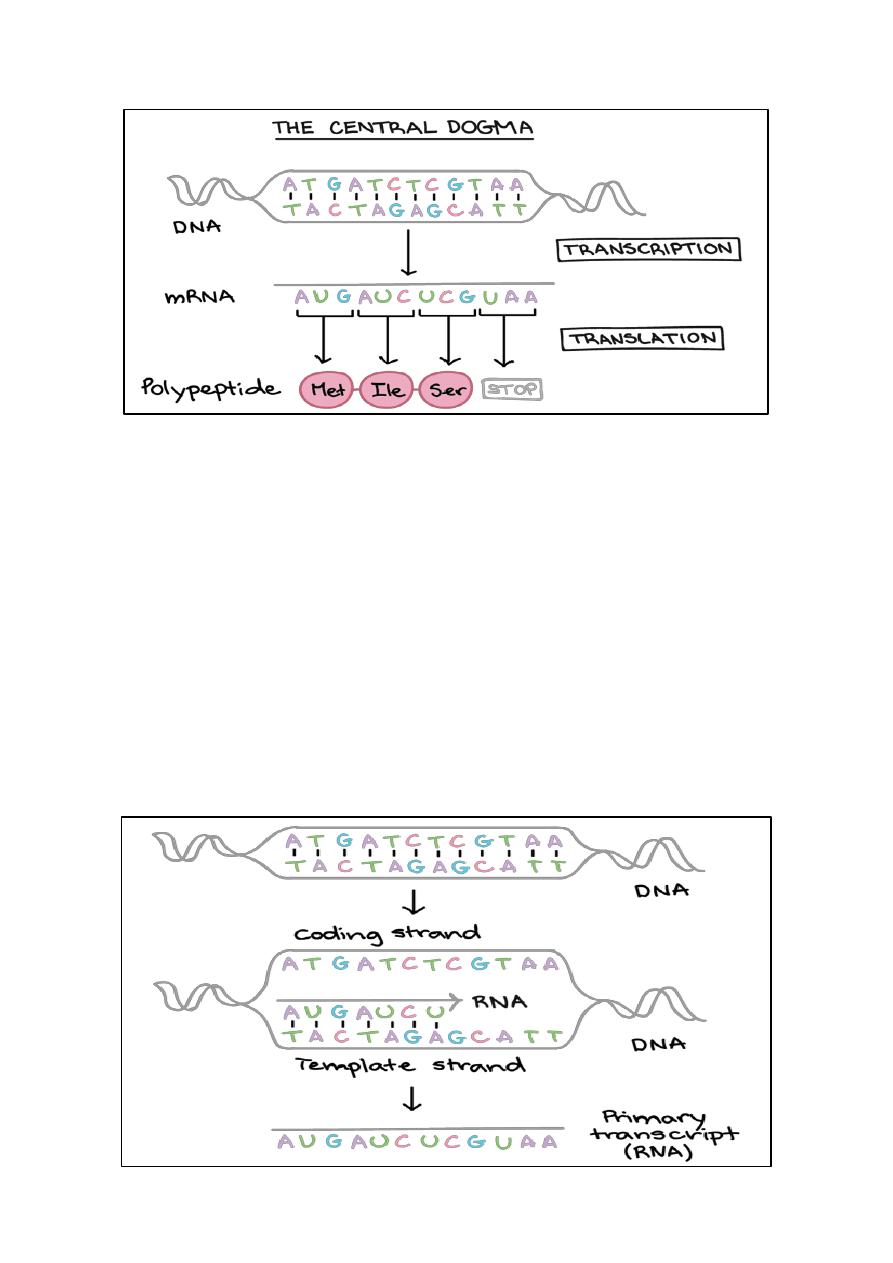
Thus, during expression of a protein-coding gene, information flows from
DNA→RNA →protein. This directional flow of information is known as the central dogma of
molecular biology. Non-protein-coding genes (genes that specify functional RNAs) are still
transcribed to produce an RNA, but this RNA is not translated into a polypeptide. For either
type of gene, the process of going from DNA to a functional product is known as gene
expression.
Transcription
In transcription, one strand of the DNA that makes up a gene, called the non-coding strand,
acts as a template for the synthesis of a matching (complementary) RNA strand by an enzyme
called RNA polymerase. This RNA strand is the primary transcript.
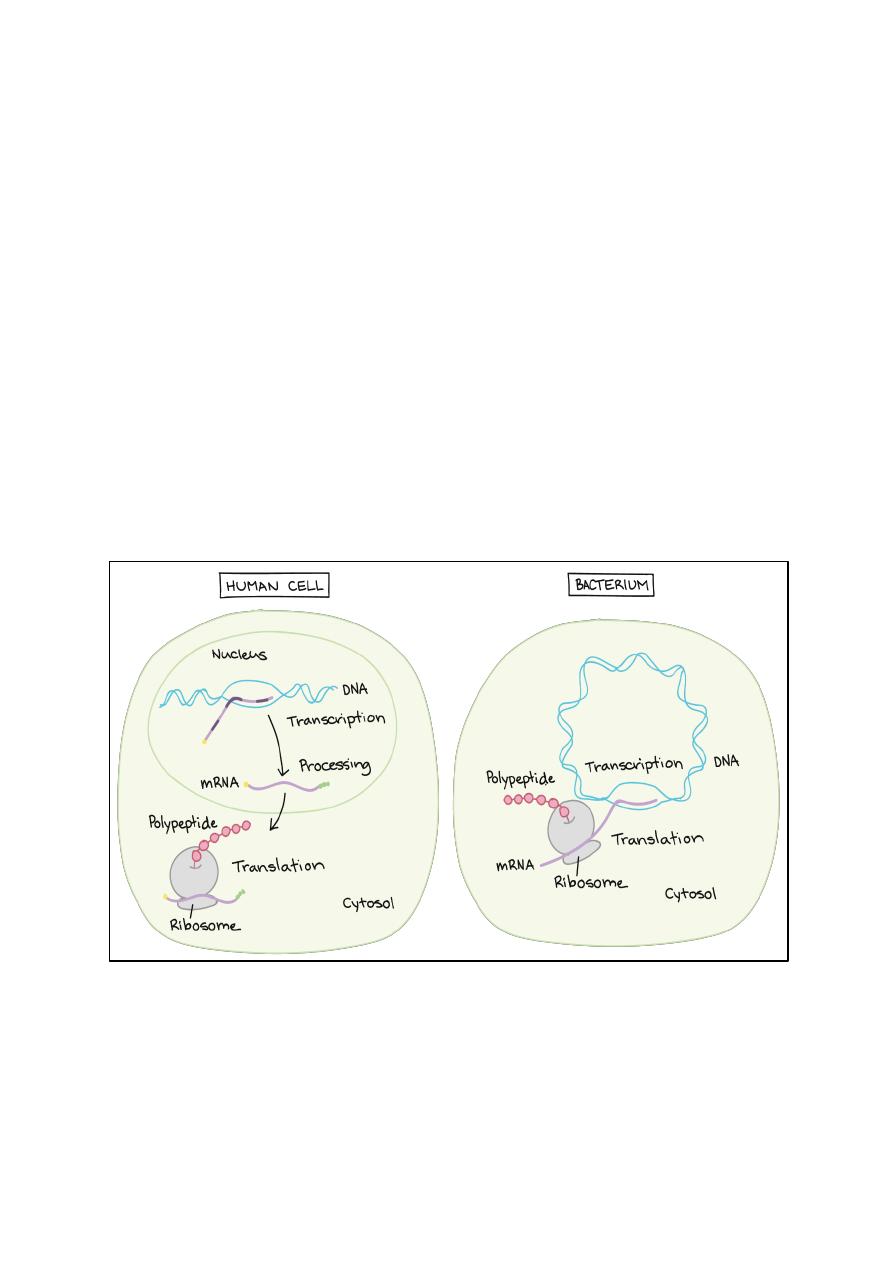
The primary transcript carries the same sequence information as the non-transcribed strand of
DNA, sometimes called the coding strand. However, the primary transcript and the coding
strand of DNA are not identical, due to biochemical differences between DNA and RNA. One
important difference is that RNA molecules do not include the base thymine (T). Instead, they
have the similar base uracil (U). Like thymine, uracil pairs with adenine.
Transcription and RNA processing: Eukaryotes vs. bacteria:
In bacteria, the primary RNA transcript can directly serve as a messenger RNA, or mRNA.
Messenger RNAs get their name because they act as messengers between DNA and ribosomes.
Ribosomes are RNA-and-protein structures in the cytosol where proteins are actually made.
In eukaryotes (such as humans), a primary transcript has to go through some extra processing
steps in order to become a mature mRNA. During
, caps are added to the ends of the
RNA, and some pieces of it may be carefully removed in a process called splicing. These steps
do not happen in bacteria.
The location of transcription is also different between prokaryotes and eukaryotes. Eukaryotic
transcription takes place in the nucleus, where the DNA is stored, while protein synthesis takes
place in the cytosol. Because of this, a eukaryotic mRNA must be exported from the nucleus
before it can be translated into a polypeptide. Prokaryotic cells, on the other hand, don't have a
nucleus, so they carry out both transcription and translation in the cytosol.
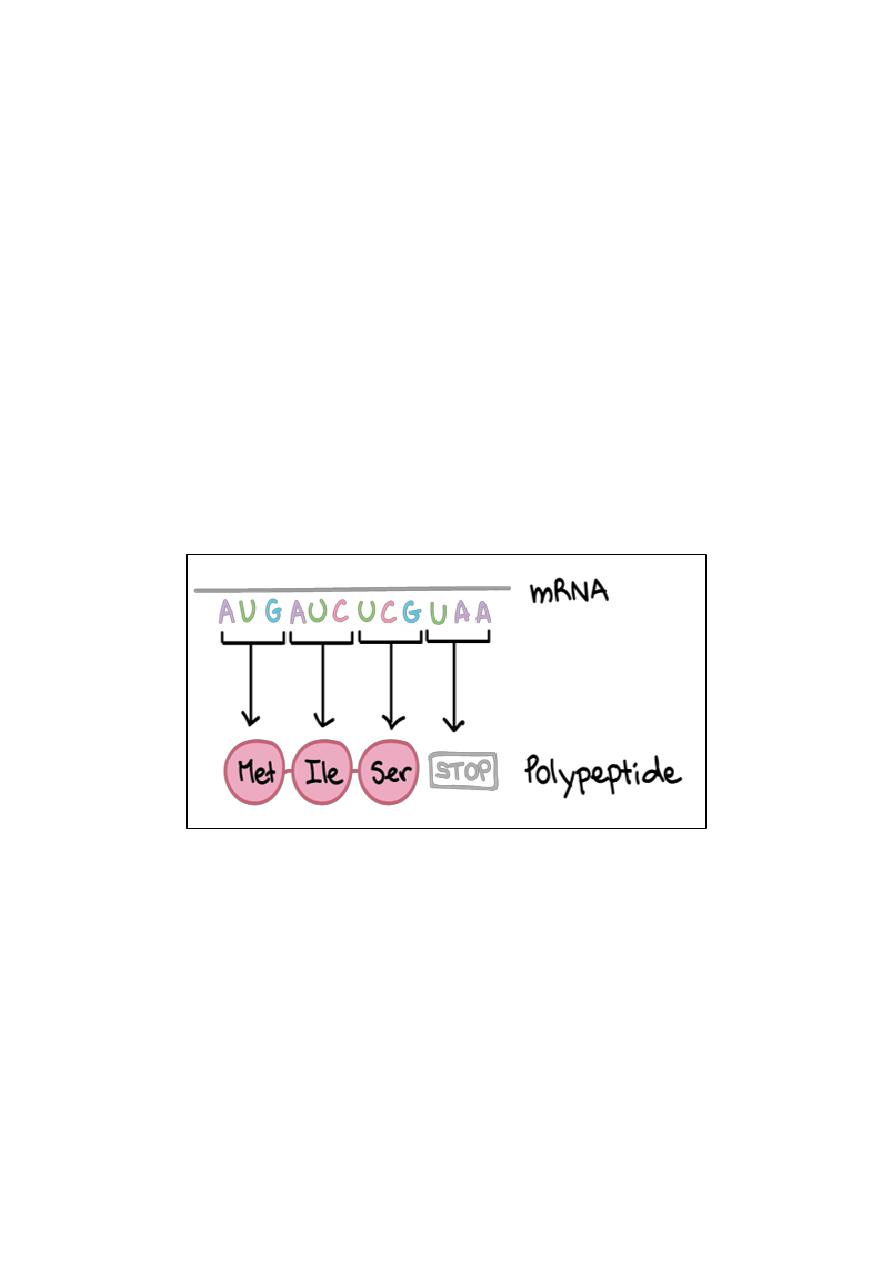
Translation:
After transcription (and, in eukaryotes, after processing), an mRNA molecule is ready to direct
protein synthesis. The process of using information in an mRNA to build a polypeptide is
The genetic code:
During translation, the nucleotide sequence of an mRNA is translated into the amino acid
sequence of a polypeptide. Specifically, the nucleotides of the mRNA are read in triplets
(groups of three) called codons. There are 616161codons that specify amino acids. One codon
is a "start" codon that indicates where to start translation. The start codon specifies the amino
acid methionine, so most polypeptides begin with this amino acid. Three other “stop” codons
signal the end of a polypeptide. These
between codons and amino acids are called
the genetic code.
Steps of translation:
takes place inside of structures known as ribosomes. Ribosomes are molecular
machines whose job is to build polypeptides. Once a ribosome latches on to an mRNA and
finds the "start" codon (AUG), it will travel rapidly down the mRNA, one codon at a time. As
it goes, it will gradually build a chain of amino acids that exactly mirrors the sequence of
codons in the mRNA.
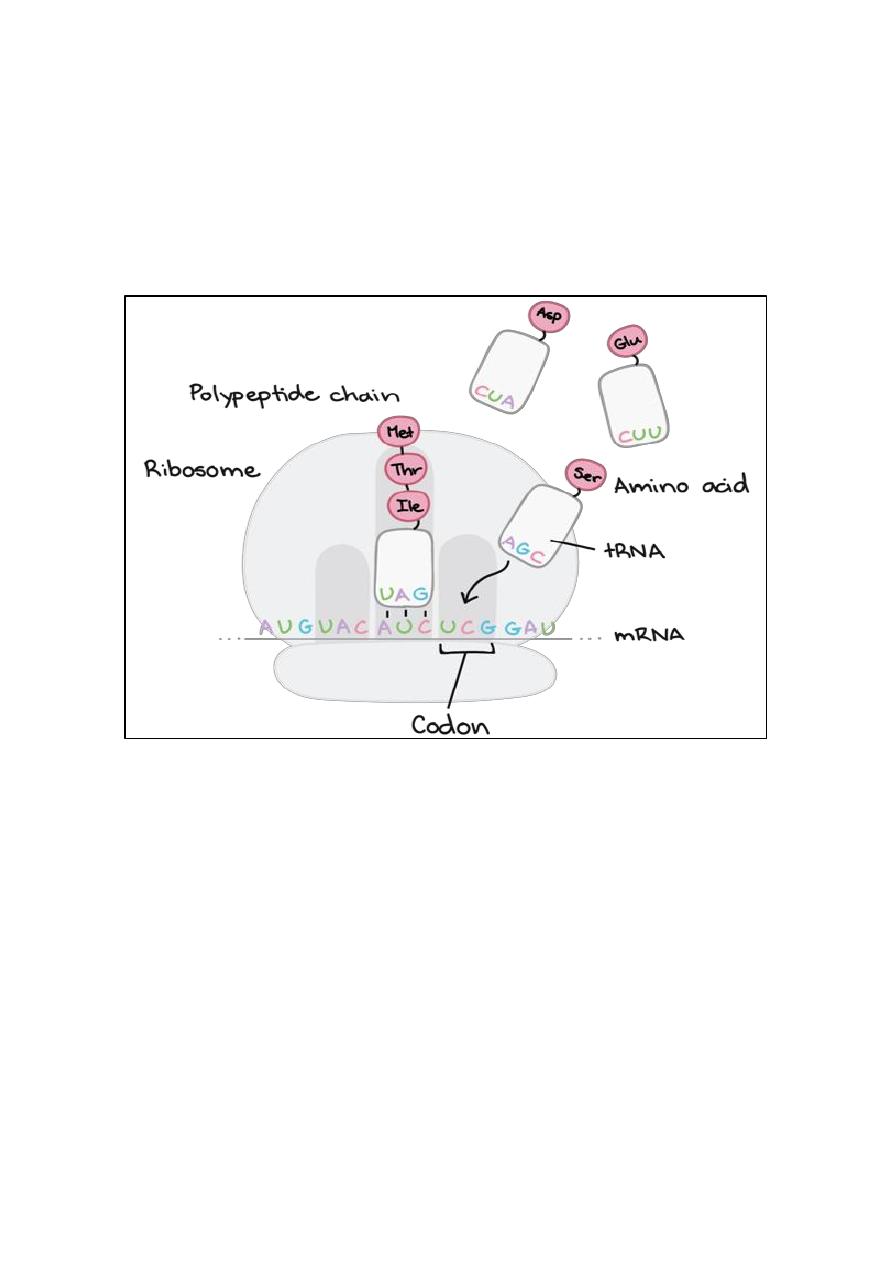
How does the ribosome "know" which amino acid to add for each codon? As it turns out, this
matching is not done by the ribosome itself. Instead, it depends on a group of specialized RNA
molecules called transfer RNAS (tRNAs). Each tRNA has a three nucleotides sticking out at
one end, which can recognize (base-pair with) just one or a few particular codons. At the other
end, the tRNA carries an amino acid – specifically, the amino acid that matches those codons.
There are many tRNAs floating around in a cell, but only a tRNA that matches (base-pairs
with) the codon that's currently being read can bind and deliver its amino acid cargo. Once a
tRNA is snugly bound to its matching codon in the ribosome, its amino acid will be added the
end of the polypeptide chain.
This process repeats many times, with the ribosome moving down the mRNA one codon at a
time. A chain of amino acids is built up one by one, with an amino acid sequence that matches
the sequence of codons found in the mRNA. Translation ends when the ribosome reaches a
stop codon and releases the polypeptide.
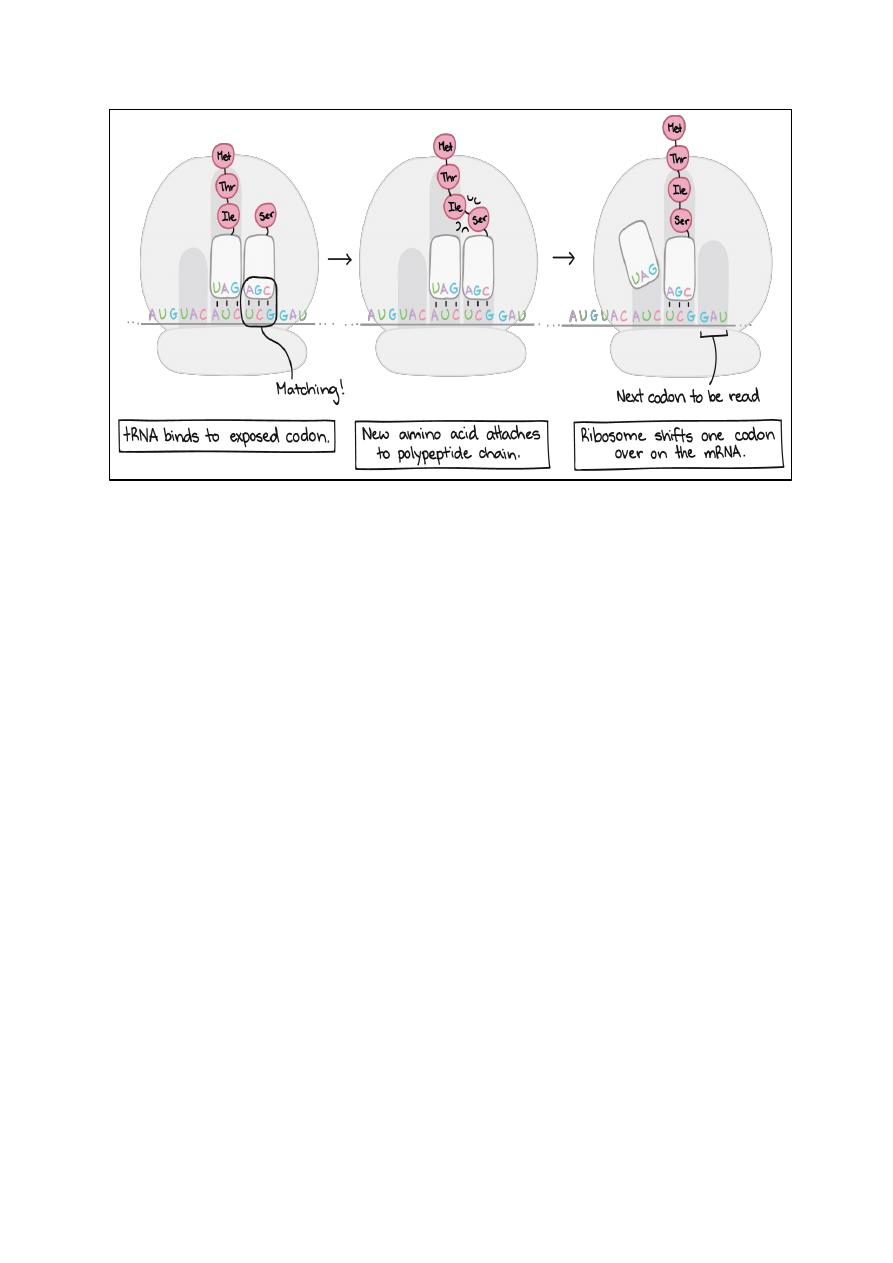
Once the polypeptide is finished, it may be processed or modified, combine with other
polypeptides, or be shipped to a specific destination inside or outside the cell. Ultimately, it
will perform a specific job needed by the cell or organism – perhaps as a signalling molecule,
structural element, or enzyme.
Codons:
Cells decode mRNAs by reading their nucleotides in groups of three, called codons. Here are
some features of codons:
Most codons specify an amino acid
Three "stop" codons mark the end of a protein
One "start" codon, AUG, marks the beginning of a protein and also encodes the amino acid
methionine
Codons in an mRNA are read during translation, beginning with a start codon and continuing
until a stop codon is reached. mRNA codons are read from 5' to 3' , and they specify the order
of amino acids in a protein from N-terminus (methionine) to C-terminus.
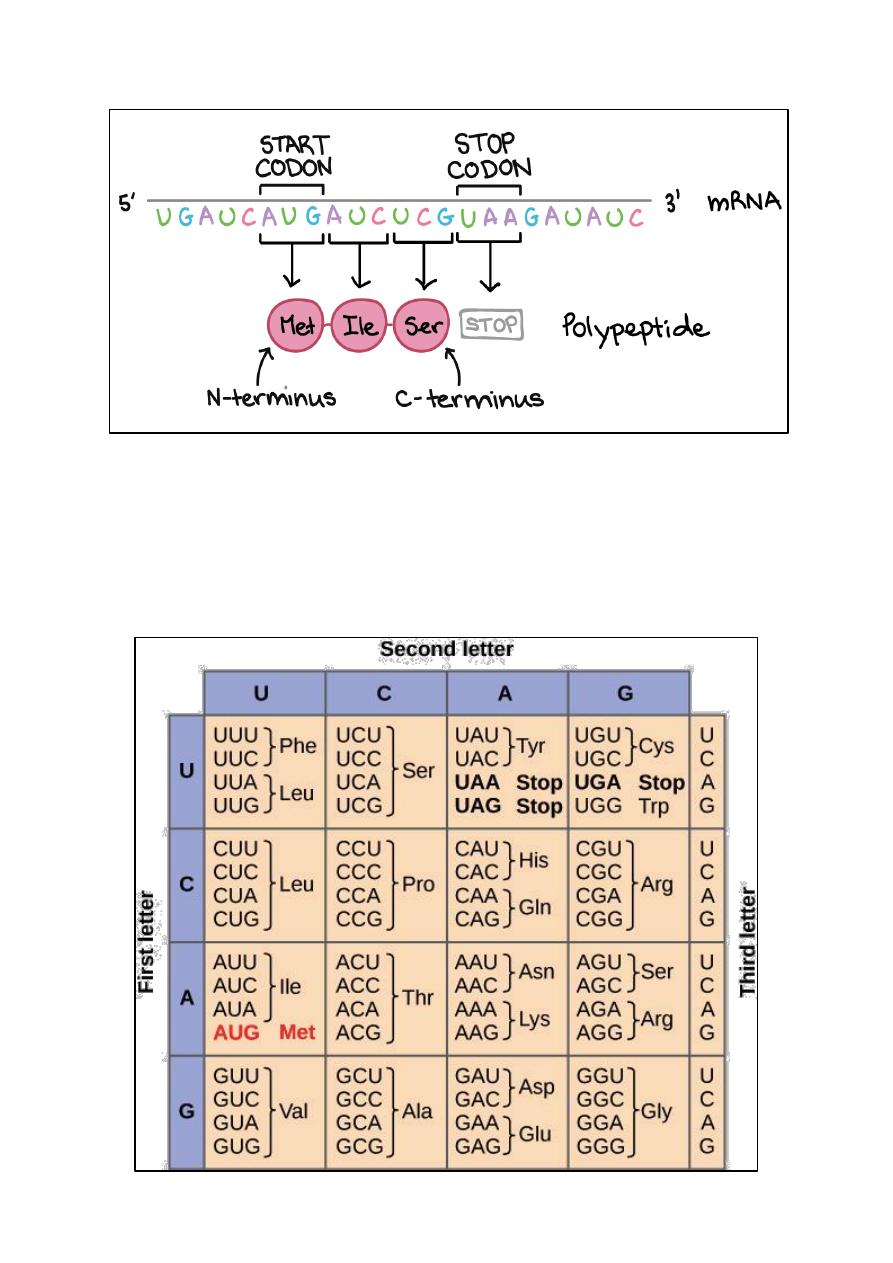
The genetic code table:
The full set of relationships between codons and amino acids (or stop signals) is called
the genetic code. The genetic code is often summarized in a table.
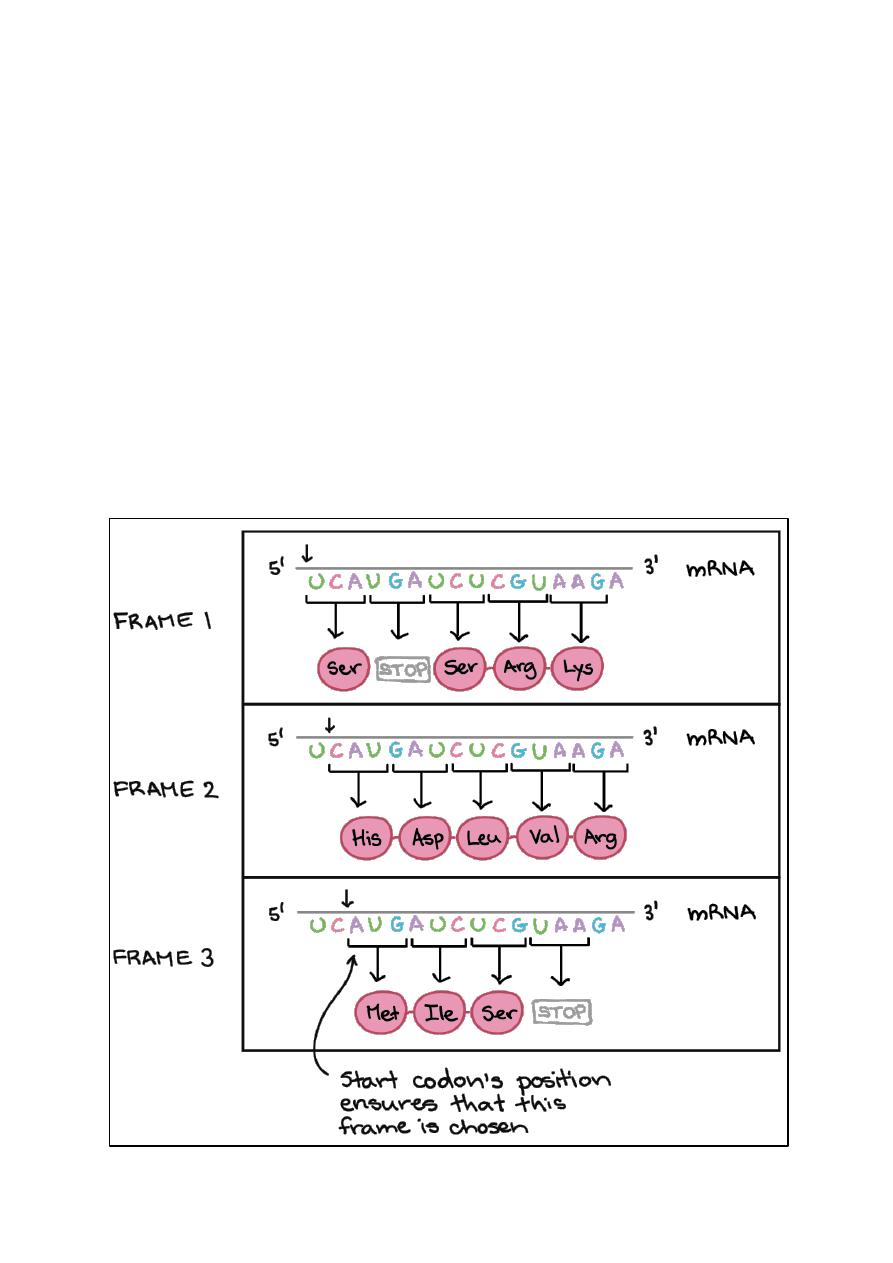
Notice that many amino acids are represented in the table by more than one codon. For instance,
there are six different ways to "write" leucine in the language of mRNA (see if you can find all
six).
An important point about the genetic code is that it's universal. That is, with minor exceptions,
virtually all species (from bacteria to you!) use the genetic code shown above for protein
synthesis.
Reading frame:
To reliably get from an mRNA to a protein, we need one more concept: that of reading frame.
Reading frame determines how the mRNA sequence is divided up into codons during
translation.
That's a pretty abstract concept, so let's look at an example to understand it better. The mRNA
below can encode three totally different proteins, depending on the frame in which it's read:
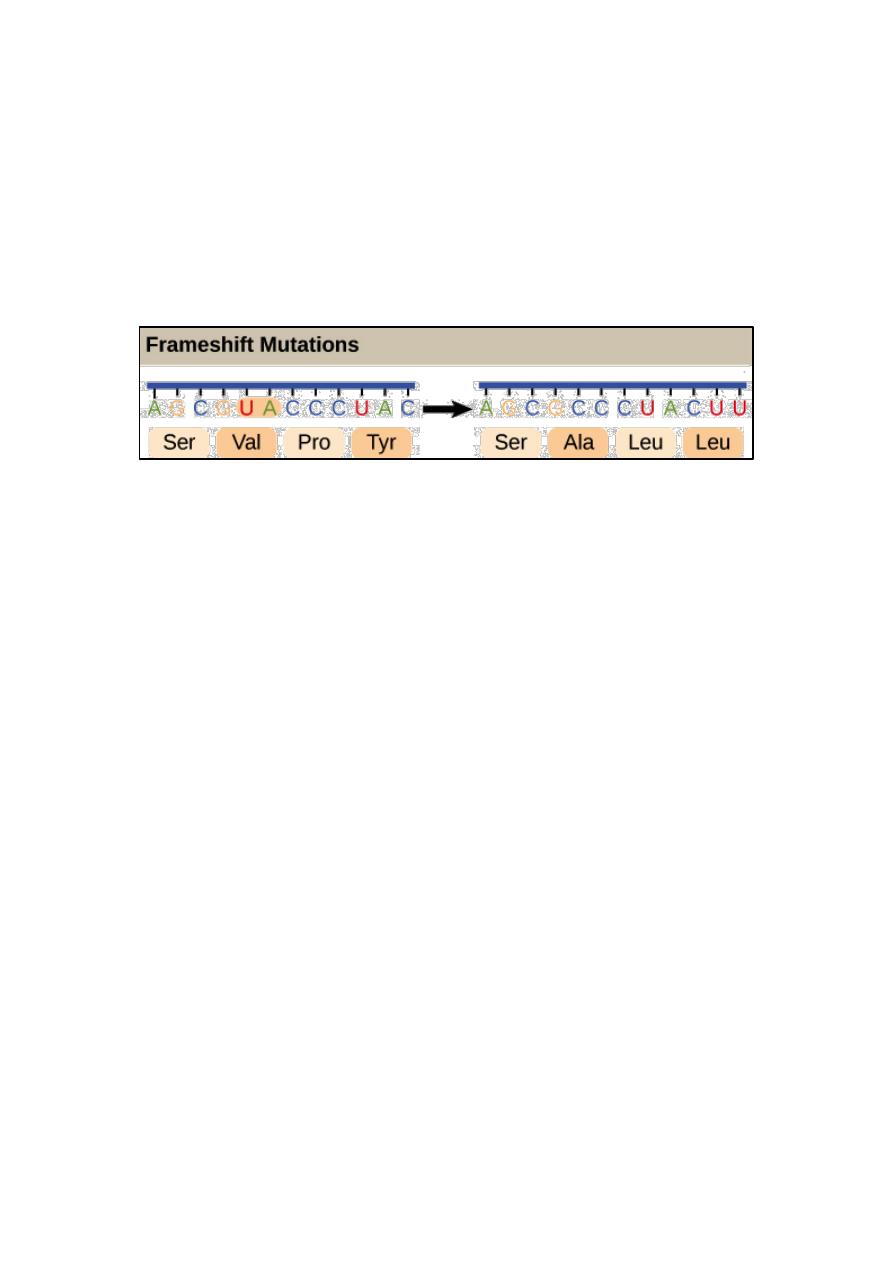
So, how does a cell know which of these protein to make? The start codon is the key signal.
Because translation begins at the start codon and continues in successive groups of three, the
position of the start codon ensures that the mRNA is read in the correct frame (in the example
above, in Frame 3).
Mutations (changes in DNA) that insert or delete one or two nucleotides can change the reading
frame, causing an incorrect protein to be produced "downstream" of the mutation site:
Summary:
DNA is divided up into functional units called genes, which may specify polypeptides (proteins
and protein subunits) or functional RNAs (such as tRNAs and rRNAs).
Information from a gene is used to build a functional product in a process called gene
expression.
A gene that encodes a polypeptide is expressed in two steps. In this process, information flows
from DNA→RNA→ protein, a directional relationship known as the central dogma of
molecular biology.
Transcription: One strand of the gene's DNA is copied into RNA. In eukaryotes, the RNA
transcript must undergo additional processing steps in order to become a mature messenger
RNA (mRNA).
Translation: The nucleotide sequence of the mRNA is decoded to specify the amino acid
sequence of a polypeptide. This process occurs inside a ribosome and requires adapter
molecules called tRNAs.
During translation, the nucleotides of the mRNA are read in groups of three called codons.
Each codon specifies a particular amino acid or a stop signal. This set of relationships is known
as the genetic code.
